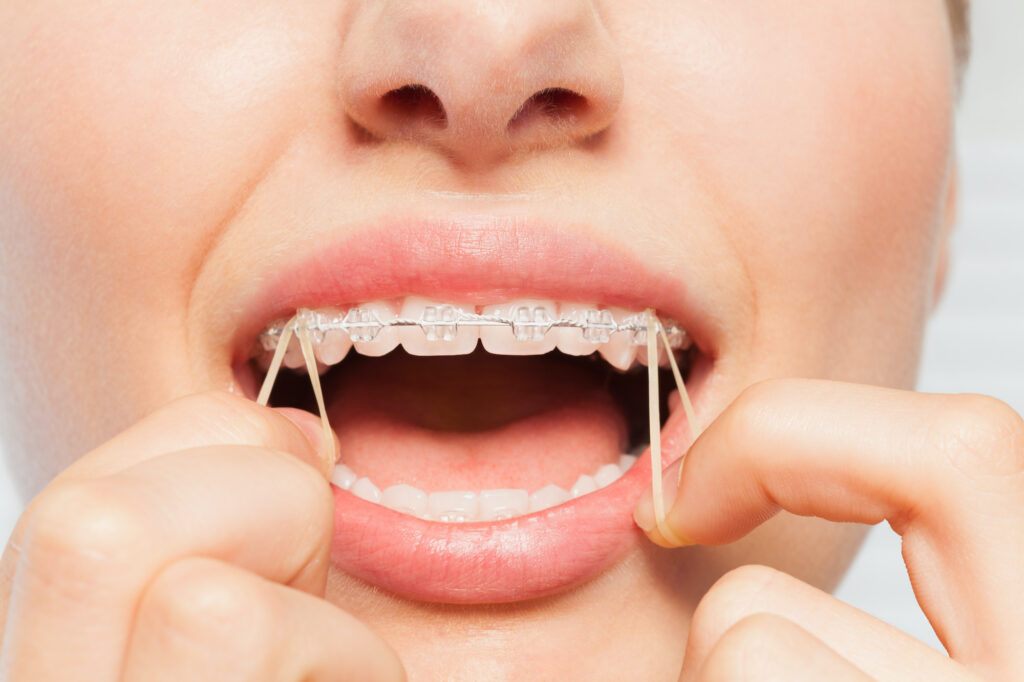Rubber Bands for Braces 101

Braces have been around for generations now and there are quite literally millions of people who have benefitted from this one-of-a-kind and special type of orthodontic procedure. For people of all ages, braces can be a key way to gain the sort of smile and confidence they have always wanted.
But despite braces being so well known and beneficial to so many, there are still a lot of things that are just unknown about them to plenty of people. Millions of people, even those who are about to get braces installed, don’t know the ins and outs of the appliance and how it performs. They also don’t know about the rubber bands that hold braces together.
Yes, without rubber bands, braces really wouldn’t work and they wouldn’t grant the bright and happy smiles that people have come to expect.
Rubber bands for braces are supremely important and quite literally hold everything together. Here is some information about how – and why – they work.
What Are Rubber Bands For Braces?
Whether it be braces for kids or adults, rubber bands are almost always involved with traditional sets of braces. These elastics are, of course, small and stretchy bands that work with the braces to help move the teeth of the patient into their proper places. Rubber bands for braces are made in all sorts of sizes, colors, and strength levels too, meaning that no matter what sort of issues a patient has, they can be addressed.
And what exactly is the purpose of these rubber bands and why have they become so pivotal to the entire process of aligning teeth?
No matter if they are for pediatric braces or teen braces in Philadelphia, rubber bands have a very distinct purpose in every single case.
Firstly, they are there to correct the bite. Overbites, underbites, and crossbites are just some of the multiple bite complications that can arise in the mouth, especially in the early years of life. With the use of rubber bands, everything can be kept in line, shifted, and put in the right place.
They also help with teeth alignment, ensuring a straight smile and giving patients the sort of look that they have always wanted. That is also true for jaw alignment as well because rubber bands can provide jaw corrections and strength, which will ensure that patients are able to bite, speak, and chew with ease and function.
Types Of Rubber Bands
Not all rubber bands for braces are created equal. There are many different types that orthodontists use. While they should all get the job done and perform their functions well, they don’t all work the same way. Interarch bands, for example, stretch from the upper to the lower arch and are used to align jaws and fix bite problems.
Meanwhile, intermaxillary bands are used within the same arch and are created to focus on specific movements of the teeth and close gaps in the smile.
Your orthodontist will choose which type of rubber band is perfect for your treatment plan and they will also instruct you on how to use them.
How To Use Rubber Bands For Braces
Speaking of, using the rubber bands that come with your braces isn’t as simple as you might assume. There are certain rules that you need to stick to in order to guarantee effectiveness.
Firstly, you need to stay consistent with your rubber bands. You will need to wear them all day, every day, except when you are eating and brushing your teeth. You also need to be sure that you regularly change the rubber bands because they don’t last forever. In fact, your doctor may instruct you to change your bands every twelve hours, twice a day.
Most importantly, you need to keep up with other oral hygiene practices. You need to continue brushing and flossing your teeth, for example, and ensure that you are preventing plaque buildup around the braces.
The rubber bands that are installed will be strong but you need to know that they are not indestructible. This means that they may weaken and snap over time. That is why you need to have some replacement bands ready to go. If they break, you should replace them right away in order to keep your treatment plan working effectively.
Rubber Band Tips
Now, how do you ensure that the rubber bands are comfortable? This is a very important question. The bands are vital, of course, but they should never be hurting you. If not placed correctly or maintained well, the rubber bands attached to your braces might end up hurting or causing a lot of discomfort. But it doesn’t have to be that way. Here are some ways that you can improve the comfort levels of your rubber bands.
Make sure they are properly placed at all times. If you doubt that they are, you should immediately contact your orthodontist. Don’t be afraid because this happens to a lot of people and adjusting the bands isn’t that hard or time-consuming. Proper placement is key.
Your orthodontist will adjust the size or type of the bands too, which will help with comfort. If you are feeling unreasonable discomfort, it might be time for new bands so be sure to communicate with your doctor.
Keep in mind that there will be some initial discomfort when you first get the braces and bands. But this will fade soon after. Do not be alarmed if it feels tight, uncomfortable, or odd. It’s a new experience and it requires an adjustment period.
Final Thoughts
Rubber bands and braces go together. They always have, and they likely always will. Some people think they will end up being annoying or painful but the opposite is true. In fact, you will probably forget that they are even there.
No matter how small or seemingly inconsequential they are, rubber bands for braces are supremely important and they can help radically transform your smile for the better. Your orthodontist will choose them and install them but then it’s up to you to keep them strong. In a short matter of time, you will soon be looking at the smile you always wanted.








